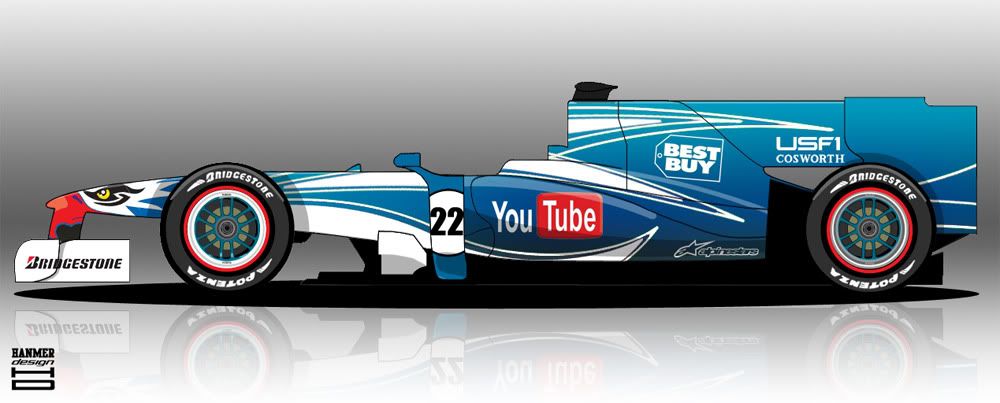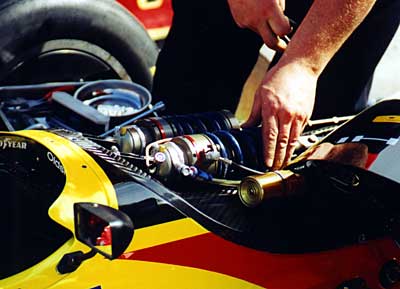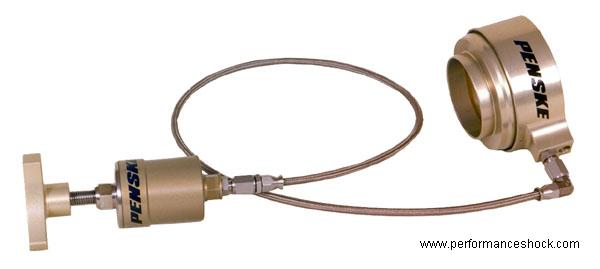scarbs wrote:I’ve been pondering transverse gearbox layouts. Firstly longitudinal gearboxes, these have been standard in F1 for over ten years with little variation in fundamental layout.
.
Longitudinal
The clutch feeds directly into the input shaft (at a height of 58mm above RP – i.e. crank centreline), the input shafts along the centre line of the car, 85mm above this lies the lay shaft, the 7 gears are arranged along these shafts, separated by the dog ring\collars. The dogs are on the side faces of the gears, and the dog ring uses internal teeth to engage against the gears.
We know the minimum width of a gear 12mm, although the higher gears may be narrower, from recent F1 dog ring\collars I own, I know these are around 10mm wide. Hence a run of gears would be around 125mm Long. Bearing in mind the largest possible diameter gear due the crank centreline would be slightly less 116mm, allowing for clearance perhaps 110mm dia. The larger gears are placed on the lower input shaft and nearer the engine, thus making the gearbox taper towards the rear.
To turn the differential, the cluster needs to turn the drive 90-degrees, its does this via a cross shaft with a bevel gear and then in turn the differential via a ring gear.
From the gearboxes I’ve seen the length from engine face to axle line is around 300-350mm.
.
Transverse
A transverse box turns the drive 90-degrees far earlier, in fact between the clutch and the input shaft. This makes the input shaft wider as it needs to mount the bevel gear. The lay shaft could then placed either above or behind the input shaft (or any angle in between). Placing it above is an interesting proposition, this mimics the style used for performance motorbike engines, making for an extremely short gearbox. Thus the gearbox could be as sort as the maximum gear diameter (110mm), potentially allowing a engine face\axle line length of just 200-250mm. However the width of the ‘box ahead of the differential would be wide, allowing for the bevel gear, casing and bearings it could be over 200mm wide over a length of 150mm.
.
.
I can’t see that extreme shortness is called for in current F1, although it allows for a longer slimmer fuel tank, it would shift the major engine\gearbox masses very close to the rear axle line pushing the weight distribution backwards. For a new F1 car that has yet to mature into a light design with flexibility for lots of ballast, this could compromise the still relatively forward weight bias, notwithstanding the new narrower front tyres.
Additionally, from an aerodynamic perspective, pushing the relative wide engine and its exhausts towards the rear tyres is undesirable. Modern F1 aims for minimum cross section in between the wheels to reduce drag, hence the “V“ noses (Red Bull) and super slim rear ends. This would explain why the CAD images showed the exhausts laid out so far forwards in the car. But overriding for me is the compromise in DDD design (admittedly only an issue for 2010, as they’re banned thereafter). The bulk ahead of the axle will ruin the inlet flow for the diffuser.
here's the Xtrac transverse gearbox,

It's hard to really tell how wide this thing is, but as you say it would be pushing the engine towards the wheels if the gearbox is shorter. Exhaust exits would also have to be placed wider apart, clear of the cylinder banks since the engine will be so close to the rear wing.
One way to keep the weight up front, is to have the drive shafts at an angle towards the rear of the car when viewed from a plan view.
I don't think the DDD will be obstructed much from this gearbox, if they manage to keep it away from the wheel centerline by the means that i mentioned above, even though it has a pretty steep rear end.









 It's where the spring/shock assembly goes together, on the rocker [mechanism that transfers weight through the pushrod that goes out to the wheel. The weight jacker compresses or decompresses the spring. We also have two sway bars on the front and rear that control the car's roll from side to side. And you can either stiffen them up or soften them.
It's where the spring/shock assembly goes together, on the rocker [mechanism that transfers weight through the pushrod that goes out to the wheel. The weight jacker compresses or decompresses the spring. We also have two sway bars on the front and rear that control the car's roll from side to side. And you can either stiffen them up or soften them.